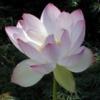-
Posts
2,227 -
Joined
-
Last visited
-
Days Won
6

nagamaki - Franco replied to nickm's topic in General Nihonto Related Discussion

nagamaki - Franco replied to nickm's topic in General Nihonto Related Discussion

nagamaki - Franco replied to Blazeaglory's topic in Tosogu

nagamaki - Franco replied to Vermithrax16's topic in Auctions and Online Sales or Sellers

nagamaki - Franco replied to Navymate's topic in General Nihonto Related Discussion

nagamaki - Franco replied to pt1093's topic in General Nihonto Related Discussion

nagamaki - Franco replied to Blazeaglory's topic in Tosogu

nagamaki - Franco replied to Navymate's topic in General Nihonto Related Discussion

nagamaki - Franco replied to nickm's topic in General Nihonto Related Discussion

nagamaki - Franco replied to fatrat2's topic in General Nihonto Related Discussion

nagamaki - Franco replied to fatrat2's topic in General Nihonto Related Discussion

nagamaki - Franco replied to nickm's topic in General Nihonto Related Discussion

nagamaki - Franco replied to sashikomi2019's topic in Nihonto

nagamaki - Franco replied to sashikomi2019's topic in Nihonto

nagamaki - Franco replied to Vermithrax16's topic in Nihonto

